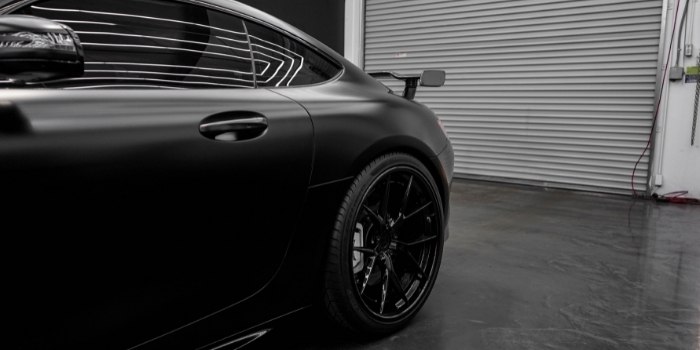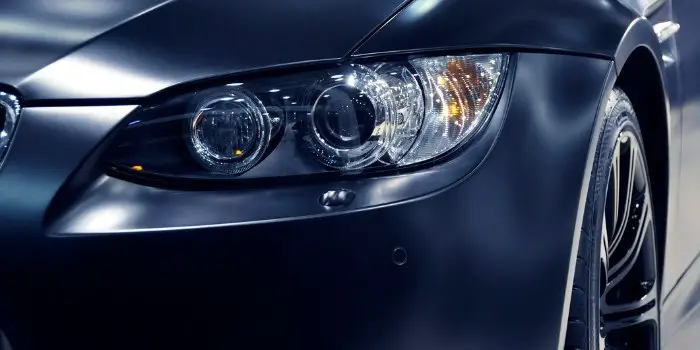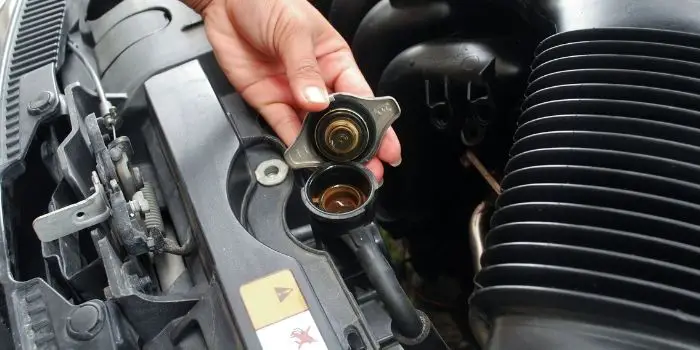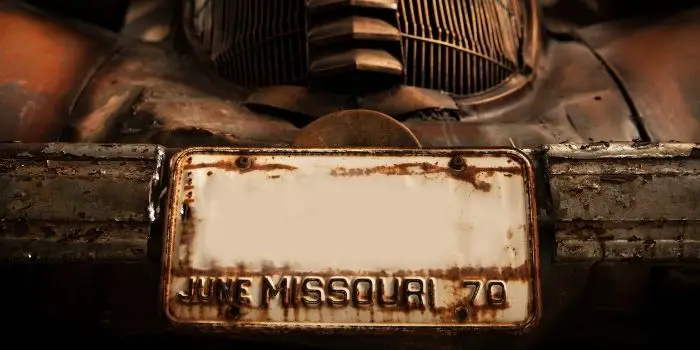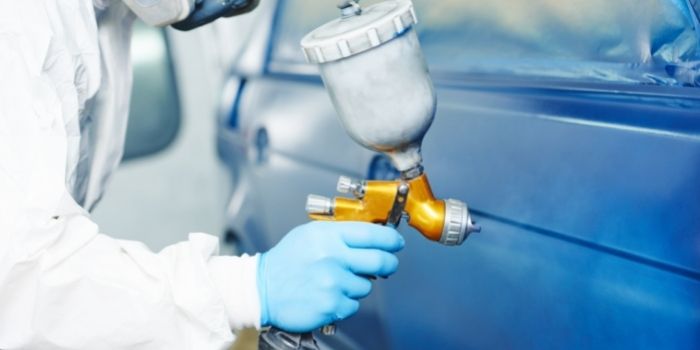The average cost of painting an automobile matte black is $2300.
Typically, you will pay between $900 and $3600 to paint your vehicle, but for a high-quality car painting with matte black color, you will spend at least $2700.
Before you begin, you must know a few things about painting a vehicle matte black.
Whether you choose to do it yourself or hire a specialist, it’s critical to understand the ramifications of painting a vehicle, particularly when using matte paint.
And in this article, we discuss what a true matte finish is, several kinds of vehicle paints that are wonderful, DIY car painting methods, and is it even worth it to give your car a matte finish.
So, let’s get started.
Table of Contents
What Exactly is Matte?
Matte paint has a uniform appearance.
Matte does not seem shiny, yet automobiles with professional matte paint have a unique clear finish that makes them look consistent and leveled.
When considering matte finish on your vehicle, there are various types of car paints you can use. These are:
Lacquer
Vintage automobiles, for example, have this kind of paint.
Enamel
These days, most automakers use acrylic enamel, and many auto paint shops may spray paint your automobile with it.
Plasti-Dip
It is a rubber coating available in spray cans and works well for little things like bumpers and wheels, but keep in mind that it readily peels off.
Coating for truck beds
Many people paint body panels with a truck bed finish to give them a tough and robust appearance.
For your new paint job, we suggest that you use good-quality paint.
Before purchasing paint, read user ratings and reviews on paint colors and manufacturers to assure a better finish.
Is Matte Better than Flat or Glossy?
There are a few key things to consider when deciding whether flat black, matte or glossy paint is right for your truck.
One is the amount of maintenance required. Flat black paint requires less upkeep than glossy paint, as it doesn’t show dirt and smudges as easily.
However, it is more susceptible to scratches and fading. Another consideration is the look you’re going for.
Flat black paint has a more sinister look, while glossy paint gives the impression of a well-cared-for vehicle.
Ultimately, the decision comes down to personal preference and what you’re willing to put up with in terms of maintenance.
DIY Method to Painting a Vehicle Matte Black
Before you get started, here’s a short rundown of the items you’ll need to paint your car yourself:
Paint for automobiles
You may use a variety of matte paint brands for this project. Go to Amazon and look for the matte paint having the greatest reviews.
Spray Painter
You will need a sprayer to spray paint the vehicle and complete the task.
Sandpaper
It is required for the prep and sanding of the coatings.
Power washer/compressor
A power washer and an air compressor are both required for a good detail job.
Paint Masker
Pros automobile painters utilize a masker to swiftly cover up trims, windows, taillights, door jamb, electrical components, and other non-paintable areas.
Wax of Carnauba
It is an excellent technique to preserve new paint from grime and UV radiation.
Waxing is a temporary kind of protection that must be administered regularly. A ceramic coating would be a more long-lasting protective option.
Drop Cloth
Utilize this cloth to prevent getting paint on the garage floor.
Steps for Painting
Once you have your materials ready, here are the step-by-step instructions you need to follow…
Step 1: Wash your automobile well and let it air dry before commencing the painting process.
Step 2: Once dry, remove any detachable pieces such as mirrors, trims, lights, and so on, attempting to minimize the do-not-paint areas.
Step 3: Now, dry sand the surface with 120-grit sandpaper to scuff up the faults and flaws in the original paint. Sand to reveal the bare metal underneath the paint.
Step 4: Thoroughly clean the whole automobile with denatured alcohol to remove dirt and grease from the surface.
Step 5: Cover the sections you don’t want to paint using newspaper and masking tape.
These places include the grills, mirrors, door handles (if they are not body-colored), sunroof (if the vehicle has one), windows, windshield, and so on.
To guarantee perfect sealing, use high-quality masking tape.
If there are gaps in the tape or if the tape’s adhesive isn’t strong enough, the over-sprayed paint may discolor these areas.
Step 6: Prime all surfaces with enough paint to cover any scratches or pits leftover after sanding.
Priming ensures that the surface of the automobile is level and smooth, which is necessary for proper paint application.
Allow the primer to cure completely. Typically, it takes 3 to 4 hours for the primer to dry, but verify the directions on the bottle since drying times may vary across brands.
Check to see whether several coatings are necessary. If so, apply a second layer once the first has fully dried.
Step 7: Wet-sand the surface with 600-grit sandpaper when the primer has dried. This would smooth out any spots with primer drips or blots.
Even though this is finer sandpaper, don’t sand too aggressively or you’ll expose the metal all over again.
Step 8: Degrease all surfaces and carefully clean to remove any dust or other particles that collected during priming.
Step 9: Now comes the fun part: painting.
Read the paint can’s directions carefully. Canned paints have the benefit of not requiring a separate sprayer or thinning of the paint.
Always remember to paint in a sweeping motion from side to side to cover as much space as possible.
As this is the penultimate phase in the actual painting process, try to be as precise as possible with this coat.
Step 10: Allow time for the paint to dry once you’ve finished painting the whole automobile.
Canned paints should dry for about 24 hours on average (follow the instructions on the can).
Allow the paint to set completely before driving or exposing the automobile to dust and grime.
Step 11: After the paint has dried fully, wet-sand it with 1,200-grit paper until all of the surfaces are smooth.
Rinse away any residue and allow the vehicle to dry. Buffing the paint will damage the finish.
Step 12: You might give your vehicle a more polished appearance by using a car wax designed exclusively for a matte finish.
Hiring a Pro to Do the Job? (Consider these things)
When hiring a professional for your car’s black paint job, here are a few things you need to consider.
Cost
A professional paint job will cost you between $600 and $6,000 at a shop. To obtain the greatest deal on your repaint, call around to multiple businesses for different rates.
Don’t forget to look at the web evaluations of the company you’re considering doing business with.
Anything less than four stars may not be a smart choice.
When hiring a specialist for painting, get a warranty in case anything goes wrong later on.
Time
DIY repainting takes time, and a fastidious mentality is required to make an automobile paint job seem excellent.
‘Will this be a hassle?’ ask yourself. – just another thought to keep in mind when considering whether or not to paint the automobile yourself.
However, if it’s only a touch-up, there’s no need to engage an expert.
Tips for Washing Your Car with Black Matte Paint at Home
With black matte paint, it is important to wash your car at home carefully so that your paint does not get damaged.
Before using the matte-specific vehicle shampoo, always spray your car with a hose.
Wash the car gently, working in tiny portions from top to bottom. Rinse each soapy part well before going on to the next.
Continue in this way until the whole vehicle has been washed. When washing, use a soft microfiber or chamois cloth and avoid using brushes.
Allowing it to air-dry after washing will result in the creation of water stains. Instead, use a moist microfiber cloth to wipe out the whole vehicle and then dry it.
To keep the paint’s finish longer, use matte-specific paint protection solutions.
Such products are manufactured by several automobile care companies, including Swissvax and 3M.
And don’t forget to thoroughly read the product’s manual before applying it.
Matte Paint Care: Do’s and Don’ts
Matte paints, as opposed to chrome or gloss, need a lot of upkeep. So, it is critical to maintaining the finish of your automobile once it has been painted matte black.
Here are some simple pointers to help you preserve the color of your automobile.
a) Do not use any product intended for regular paint.
Look for auto care solutions that are designed for matte surfaces.
b) Matte finishes are appealing due to their lack of luster and flat appearance.
You don’t want to wind up with a gloss finish if you apply polish and rubbing chemicals.
c) Avoid having your automobile cleaned at an automated car wash since the brushes and shine enhancers might permanently harm the matte paint.
d) Use a microfiber cloth and an alcohol-based window cleaner for spot cleaning.
Wipe the surface in a gentle backward-forward movement, then rinse to remove any remaining cleaning.
CONCLUSION: Is a Matte Car Paint Worth it?
To conclude if matte paint is worth it or not, we need to look at its pros and cons.
When driving along the street, the flat finish produces a unique appearance that everyone will remember.
It gives a softer appearance that helps to enhance the vehicle’s trim while striving to disguise any defects on the painted surface.
When the vehicle is in direct sunlight, the advantages of matte black automobile paint are greatest.
To provide uniform aesthetic appeal, there will be less reflection from the vehicle’s surface.
The downside of picking this option is that the delicate textures often display apparent dust and debris.
With all the pros and cons discussed it’s fairly safe to say that spending anywhere from $900-$3600 on a Matte Paint is worth a try.

Based in Orem (Utah) John Paterson graduated from Utah Valley University and has begun writing in 2009. He has a large wealth of experience in writing articles related to cars, automotive repair, wheels, cleaning/maintenance, and much more. He has also written instructional articles in a similar niche for a few online publications as well. Currently, he works as a mechanic in his personal garage shop where he loves serving his countrymen from his heart.

